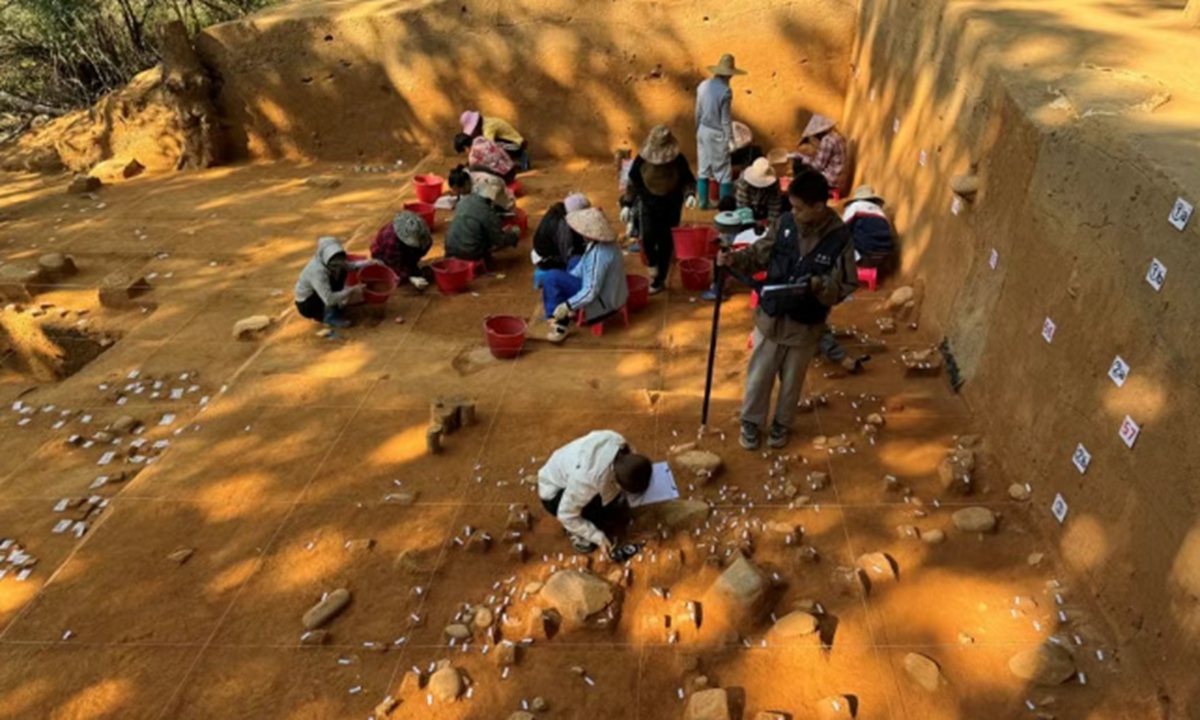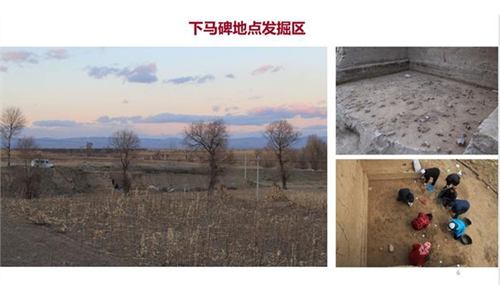ARTS / CULTURE & LEISURE
10,000-year-old site in Hainan offers new insights into early human activity

Photo: Courtesy of Liu Yang
The Nanhuohe relics site has been confirmed as the first Paleolithic open-air site discovered in South China's Hainan Province. The site provides important archaeological evidence for studying human interactions and cultural exchanges in southern China and Southeast Asia, the head of the site's excavation team told the Global Times on Thursday.Based on current archaeological excavations and research, the Nanhuohe site near the Nanhuo river in Jinbo township, Baisha county, is the only known prehistoric open-air site in Hainan. It is the largest, best preserved archaeology site in Hainan with the thickest stratigraphic deposits, the most cultural layers, the richest quantity and content of cultural relics, and the most clearly defined chronological sequence, said Hou Yamei, a research professor with the Institute of Vertebrate Paleontology and Paleoanthropology under the Chinese Academy of Sciences.
The site is also the longest-known location of continuous human activity in Hainan discovered to date. Seven of the nine identified stratigraphic layers contain cultural remains, indicating that humans lived, stayed, and carried out activities at the site for several thousand years. It has greatly enriched the types and cultural content of prehistoric archaeological sites in Hainan and holds significant value as an important new archaeological discovery, Hou told the Global Times.
So far, more than 6,000 stone artifacts have been unearthed and given serial numbers at the site, which covers an area of 50,000 square meters, while over 20,000 additional stone artifacts have been recovered through sieving, along with a considerable quantity of nutshells and charcoal remains.
Preliminary dating results obtained through optically stimulated luminescence indicate that the site dates back to around 10,000 years ago, according to Liu Yang, co-leader of the excavation team.
This site is one of the prehistoric settlement complexes in the area near the Nanhuo river, said Liu, a professor at Sun Yat-sen University.
The unearthed stone artifacts were made from a wide variety of raw materials and exhibit a rich diversity of tool types.
The large stone flake tools are mainly choppers characterized by relatively heavy and robust forms. The small tools include a variety of types such as scrapers, pointed or notched tools, and a variety of stone knives.
Based on preliminary findings, the stone artifacts exhibit the characteristics of the pebble-tool cultural tradition typical of southern China, yet they also differ from the known stone tool technologies of the South China region, she noted.
Relying on future high-precision dating and stone tool technology analyses, it is anticipated that this represents a prehistoric island culture with unique characteristics and an adaptive developmental sequence, she said, adding that the research will continue and more scientific findings will be released later this year.
The discovery of hearth remains and well-preserved areas of stone tool production, together with the presence of nutshells, suggests that early humans engaged in tool-making and other productive and daily activities at the site.
Hou noted the charcoal and hearth remains provide important material for the study of early human behavior, as well as the sequential development of stone tool technology in relation to changes in the ancient environment.
The Nanhuohe relics site was first discovered in 2022 and excavation began in 2024 through a joint effort by the institute, Hainan Provincial Institute of Cultural Relics and Archaeology as well as Sun Yat-sen University, according to Hou.



